Abstract
A mass outbreak of poisoning occurred in central Taiwan in 1979 due to the ingestion of rice-bran oil contaminated with polychlorinated biphenyls (PCBs), dibenzofurans (PCDFs) and quaterphenyls (PCQs). The incident was called PCB poisoning or Yu-Cheng in Taiwan. The major PCB and PCDF congeners in the toxic oil and in the blood and tissues of the poisoned patients were characterized by gas chromatography and gas chromatography-mass spectrometry using highly efficient glass capillary columns. The levels of toxic agents in the rice oil samples collected from the factory and school cafeterias and the families of the poisoned patients are in the range of 53 to 99 ppm, 0.18 to 0.40 ppm and 25 to 53 ppm for PCBs, PCDFs, and PCQs, respectively. The blood samples of 165 patients collected 9 to 18 months after the onset of poisoning contained 10 to 720 ppb of PCBs, with a mean value of 38 ppb. The blood samples of 10 patients collected 9 to 27 months after poisoning contained 0.02 to 0.20 ppb of PCDFs. Comparative rates of elimination of some PCB congeners from the blood of patients were studied. Various tissues from a patient who died 2 years after poisoning were analyzed for PCBs, PCDFs and PCQs. The intestinal fat contains the highest level of PCBs, while the liver contains the highest concentration of PCDFs. The PCB congeners retained in the tissues either do not have adjacent unsubstituted carbon atoms or have a pair at ortho-meta positions of the biphenyl ring. The major PCDF congeners retained in the tissues were 1,2,3,4,7,8-hexachloro-DF, 2,3,4,7,8-pentachloro-DF and 1,2,4,7,8-pentachloro-DF. The former two congeners, especially 2,3,4,7,8-pentachloro-DF, are very toxic PCDFs; they may play important roles in the etiology of Yu-Cheng.
Full text
PDF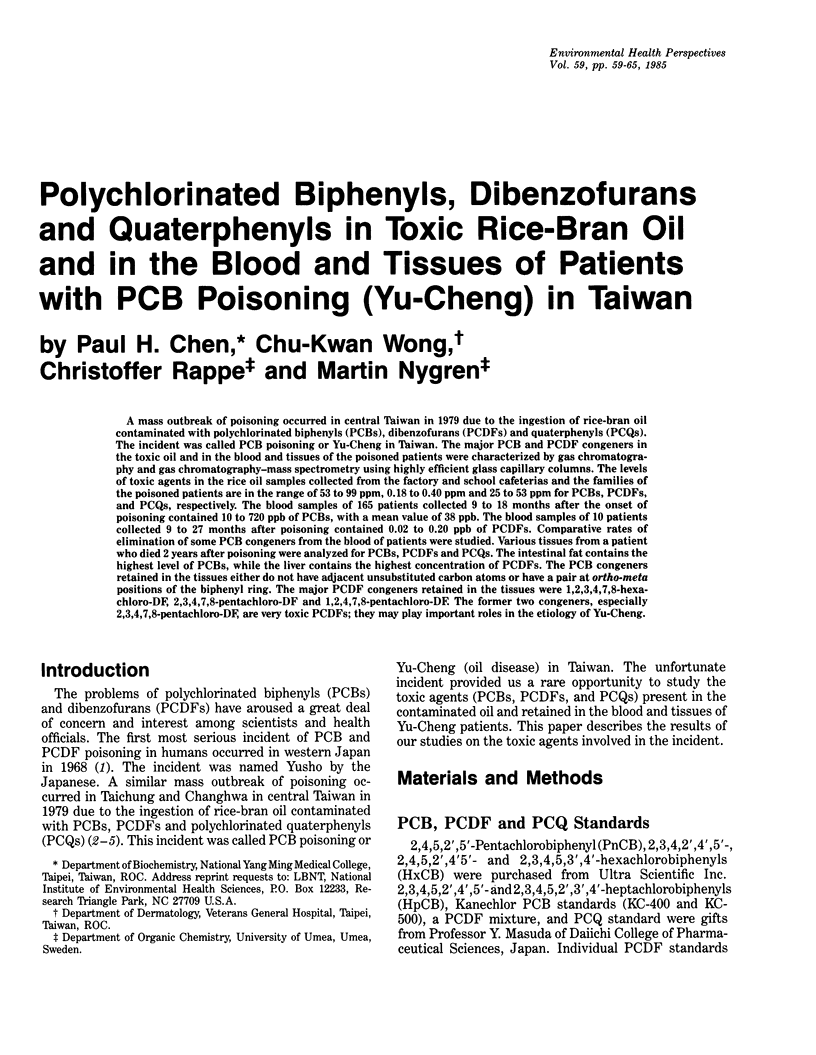

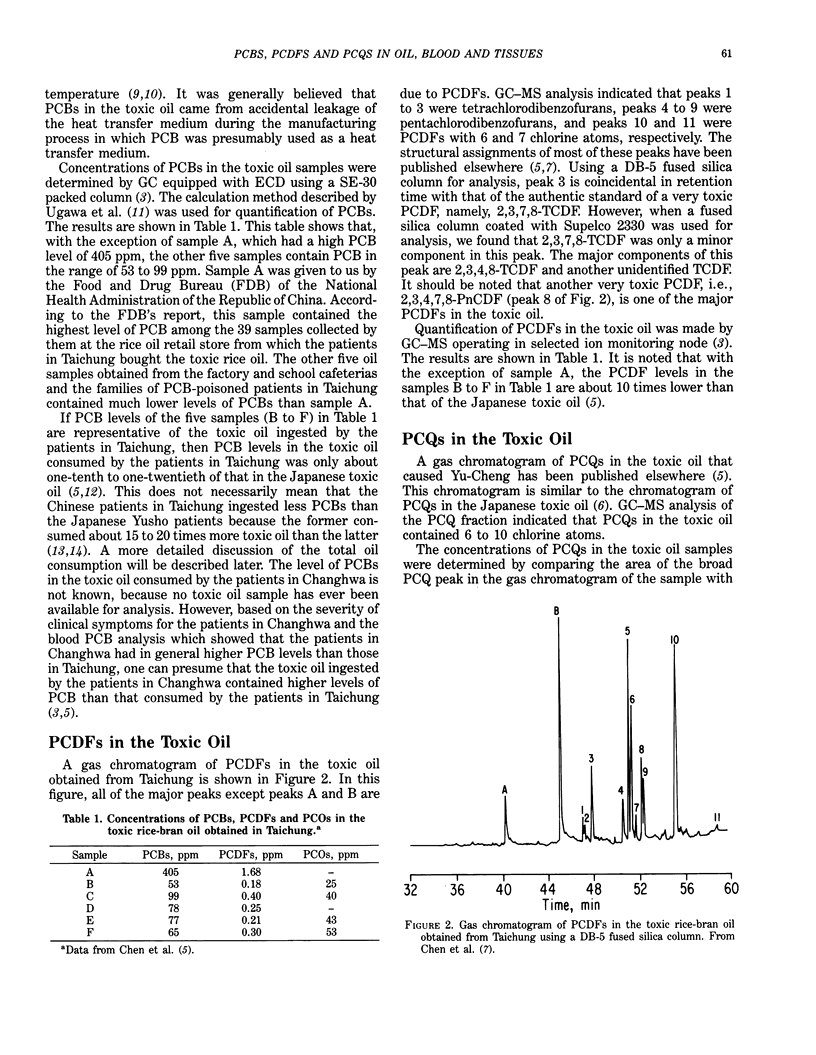

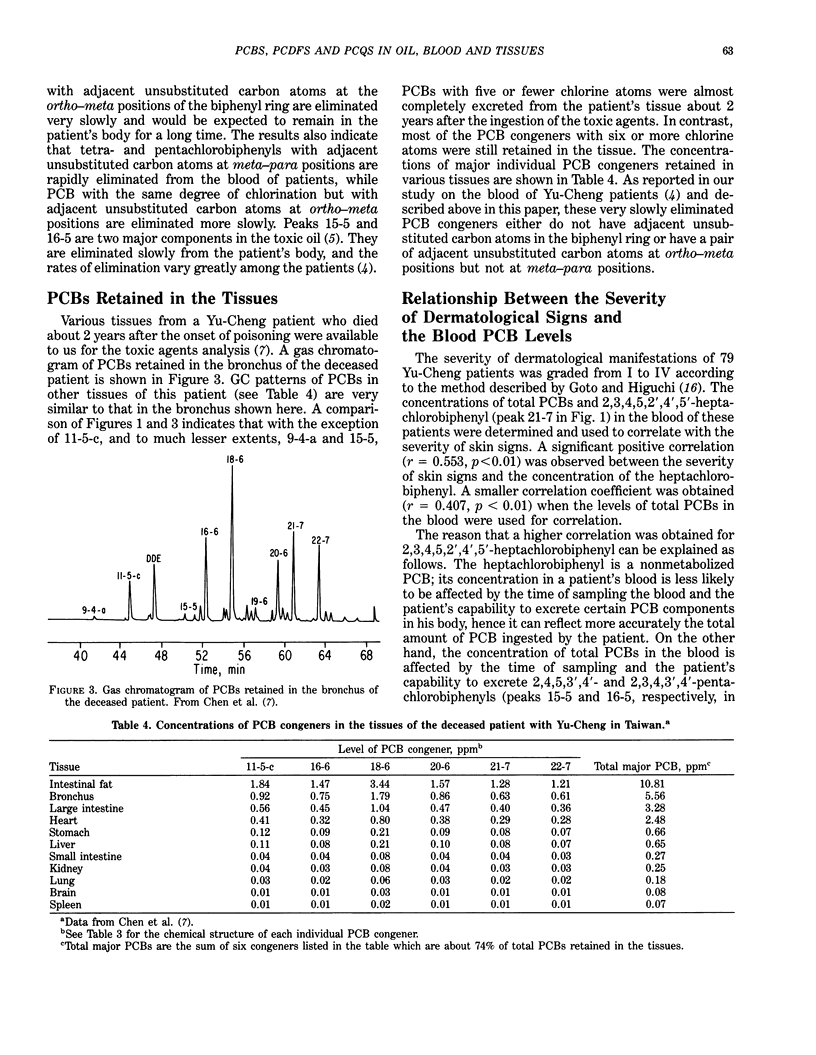
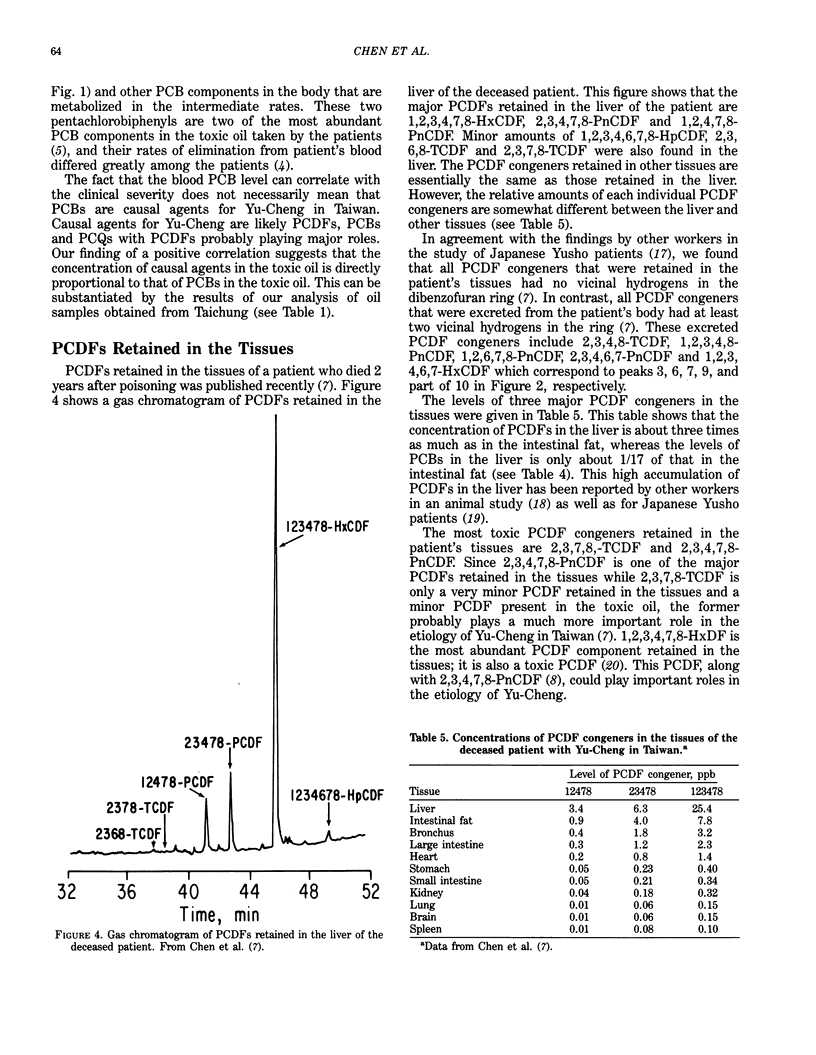
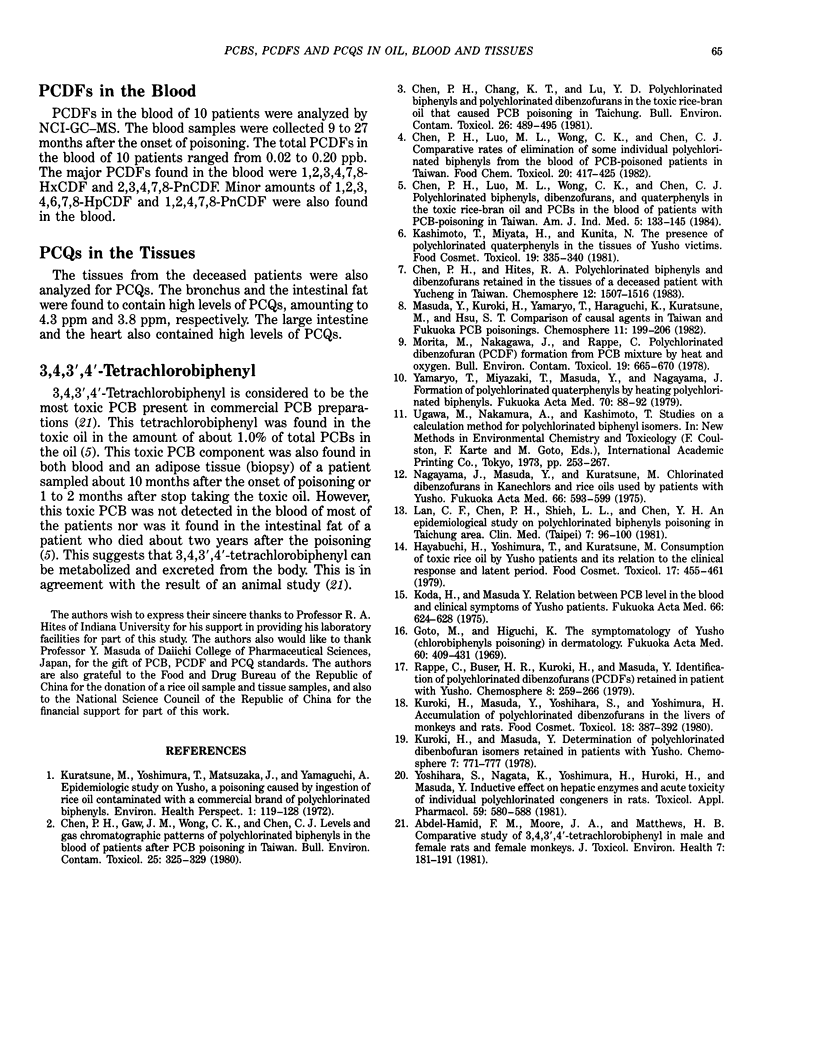
Selected References
These references are in PubMed. This may not be the complete list of references from this article.
- Abdel-Hamid F. M., Moore J. A., Matthews H. B. Comparative study of 3,4,3',4'-tetrachlorobiphenyl in male and female rats and female monkeys. J Toxicol Environ Health. 1981 Feb;7(2):181–191. doi: 10.1080/15287398109529971. [DOI] [PubMed] [Google Scholar]
- Chen P. H., Chang K. T., Lu Y. D. Polychlorinated biphenyls and polychlorinated dibenzofurans in the toxic rice-bran oil that caused PCB poisoning in Taichung. Bull Environ Contam Toxicol. 1981 Apr;26(4):489–495. doi: 10.1007/BF01622125. [DOI] [PubMed] [Google Scholar]
- Chen P. H., Luo M. L., Wong C. K., Chen C. J. Comparative rates of elimination of some individual polychlorinated biphenyls from the blood of PCB-poisoned patients in Taiwan. Food Chem Toxicol. 1982 Aug;20(4):417–425. doi: 10.1016/s0278-6915(82)80107-5. [DOI] [PubMed] [Google Scholar]
- Chen P. H., Luo M. L., Wong C. K., Chen C. J. Polychlorinated biphenyls, dibenzofurans, and quaterphenyls in the toxic rice-bran oil and PCBs in the blood of patients with PCB poisoning in Taiwan. Am J Ind Med. 1984;5(1-2):133–145. [PubMed] [Google Scholar]
- Hayabuchi H., Yoshimura T., Kuratsune M. Consumption of toxic rice oil by 'yusho' patients and its relation to the clinical response and latent period. Food Cosmet Toxicol. 1979 Oct;17(5):455–461. doi: 10.1016/0015-6264(79)90004-x. [DOI] [PubMed] [Google Scholar]
- Kashimoto T., Miyata H., Kunita N. The presence of polychlorinated quaterphenyls in the tissue of yusho victims. Food Cosmet Toxicol. 1981 Jun;19(3):335–340. doi: 10.1016/0015-6264(81)90392-8. [DOI] [PubMed] [Google Scholar]
- Koda H., Masuda Y. [Relation between PCB level in the blood and clinical symptoms of yusho patients (author's transl)]. Fukuoka Igaku Zasshi. 1975 Oct;66(10):624–628. [PubMed] [Google Scholar]
- Kuratsune M., Yoshimura T., Matsuzaka J., Yamaguchi A. Epidemiologic study on Yusho, a Poisoning Caused by Ingestion of Rice Oil Contaminated with a Commercial Brand of Polychlorinated Biphenyls. Environ Health Perspect. 1972 Apr;1:119–128. doi: 10.1289/ehp.7201119. [DOI] [PMC free article] [PubMed] [Google Scholar]
- Kuroki H., Masuda Y., Yoshihara S., Yoshimura H. Accumulation of polychlorinated dibenzofurans in the livers of monkeys and rats. Food Cosmet Toxicol. 1980 Aug;18(4):387–392. doi: 10.1016/0015-6264(80)90195-9. [DOI] [PubMed] [Google Scholar]
- Morita M., Nakagawa J., Rappe C. Polychlorinated dibenzofuran (PCDF) formation from PCB mixture by heat and oxygen. Bull Environ Contam Toxicol. 1978 Jun;19(6):665–670. doi: 10.1007/BF01685855. [DOI] [PubMed] [Google Scholar]
- Nagayama J., Masuda Y., Kuratsune M. Chlorinated dibenzofurans in Kanechlors and rice oils used by patients with yusho. Fukuoka Igaku Zasshi. 1975 Oct;66(10):593–599. [PubMed] [Google Scholar]
- Yamaryo T., Miyazaki T., Masuda Y., Nagayama J. [Formation of polychlorinated quaterphenyls by heating polychlorinated biphenyls (author's transl)]. Fukuoka Igaku Zasshi. 1979 Apr;70(4):88–92. [PubMed] [Google Scholar]
- Yoshihara S., Nagata K., Yoshimura H., Kuroki H., Masuda Y. Inductive effect on hepatic enzymes and acute toxicity of individual polychlorinated dibenzofuran congeners in rats. Toxicol Appl Pharmacol. 1981 Jul;59(3):580–588. doi: 10.1016/0041-008x(81)90313-6. [DOI] [PubMed] [Google Scholar]


